74. Treasure seeking
Thoughts on the theme of maps, and discovering hidden secrets within words.
Dear Reader,
When I asked Wikipedia how to describe a treasure map, I was treated to this fabulous definition:
A treasure map is a map that marks the location of buried treasure, a lost mine, a valuable secret or a hidden locale. More common in fiction than in reality, "pirate treasure maps" are often depicted in works of fiction as hand drawn and containing arcane clues for the characters to follow.
This is your Substack search for buried treasure! Once you’ve read this post, have a look at my arcane clues to solve the puzzle at the end!
I love maps. They were my favourite things to draw as a child. I used to make maps of treasure islands, sometimes even painting the paper with tea and burning the edges to age them.
The word ‘map’ is derived from the Latin ‘mappa’, meaning sheet or cloth. I wonder if that’s why when I’m confronted with one I’m immediately tempted to fling myself under it and not come out?
Assuming I know where I am on the map (a bold move, given my long history of getting lost), I know that I will be able to see the angle of my path pictured, and the OS Maps app will even show me a trajectory on my phone screen. Yet whenever I look at the real-life landscape in front of me I never seem to be able to see the same clues as are on the map.
For instance, as a new hiker and no-hope navigator I had once ground to a halt in a local farmer’s field in which the only immediate landmark I could see had been an electricity pylon. On which side did I need to pass it? I looked from phone screen to field, to screen again and back to field, hunting for some clue common to both. Finally – for until then, in my panic, I hadn’t been able to see for looking – I found a clue on the phone screen. That single square box located on the black dotted line must be the pylon! Reader, I counted this as an absolute breakthrough1 in my navigation journey.
These little things I’d never noticed before: the incidental punctuation, the little clues on the OS sheet or app screen, are crucial for translating the information on a map to the real world on the ground. And they make fantastic features on a treasure map, too.
There is no horizon on a map, which of course is a flat plane, yet the real-life horizon in the 3D world is crucially important for someone like me with path blindness.
In a city or town, where the horizon is concealed by hemmed-in landmarks so close to each other there’s no room to see beyond them, I struggle even more to find my way around. There’s too much input from these close-up details for me to have any hope of being objective in finding a route.
So, what to do? Well, for one of my first long solo walks, I’d decided to tackle a straightforward route. Fairly local to me is the ‘Cuckoo Trail’, a picturesque fourteen-mile trail comprising a surfaced path through the East Sussex countryside which follows the former ‘Cuckoo Line’ railway track between Heathfield and Eastbourne. Easy, right?
Well, yes, the parts of the trail which trace the route of the former railway that led across the countryside are straightforward to follow. Lined with patches of glorious woodland, it’s straight on all the way through former railway cuttings and atop a succession of embankments, and in places it runs alongside arable fields and cattle pasture.
On my walk, it was when the old railway line hit the towns that its route and I became entangled.
My most challenging part of the Cuckoo Trail had been to follow its route in the more urban areas such as the streets and twittens of Hailsham. This was where straight-line disused railway gave way to too many options: suddenly there were lanes and streets heading left and right, all distractingly planted to confuse this baffled walker.
The trail hit the street: suddenly there were pavements, vehicles and high kerbstones. Instead of trees there were lampposts, instead of disused railway platforms with their vintage signage there were pavements and actual roadsigns. In place of spring-flowering woodland undergrowth there were urban gardens; and where only bikes and hikers had shared my trail there were now cars, buses and lorries. I knew where I was – Hailsham – but where was I in Hailsham? Where had I left the rural part of my trail? And, more importantly, where on earth would I pick up the route again once I’d navigated through the disorientating town?
Towns are disorientating, full stop. Despite their visual clues of street furniture, retail shops providing bright landmark signage on street corners and the confluences of main roads meeting smaller tributary streets, the horizon is drowned by tall walls, endless rooftops and roadside advertising hoardings.

Heck, the Cuckoo Trail was turning me cuckoo. Reader, I’d lost my straight line, and even though this was just for a two-and-a-half mile section of the fourteen mile route, my disorientation had turned my walking enjoyment into something rather more sour.
It is for exactly this reason that I have walked a mile not-far-enough on the South Downs Way. The daunting prospect of having to navigate the city streets of Winchester for that first mile of my first national trail walk had proved a source of such path anxiety that I nearly didn’t set off at all. I’d had to convince my support vehicle driver2 to drop me at the start of the first rural section of the path. He was dubious.
‘No, I won’t regret it, I promise.’
Reader, I didn’t regret it. But gosh, do I have to go through this every time I set out somewhere?
The Ordnance Survey Maps app provides a great service, particularly with its mobile ‘you are here’ arrow. But this treasure-seeking hiker would rather prefer a scorched-edged, crumpled, curled-up pirate map with its concealed secrets and excited dotted lines to follow. Who knows what I might find? Whether it’s treasure, or simply the way home, I’m up for the challenge.
Well, are you up for a challenge? See if you can work out my little puzzle, ‘Hidden Roman Treasure’, underneath the map below. Your task: What is represented in the ten sentences that make up the story? Can you find a number of secrets within the words?
No spoilers, please!
So that others can still enjoy the puzzle after you’ve solved it, please don’t give your solution in the comments.
I’ll publish the answer in next Saturday’s post.
To celebrate my first year of writing on Substack, I’m giving away a copy of my favourite book, ‘Three Men in a Boat’ by Jerome K. Jerome, to a reader who has solved the puzzle. For a chance to win it, comment with ‘I’ve found the treasure!’ and send your solution to rebeccaholden@substack.com by noon UK time on Friday 16th June. Correct entries will be entered into the draw for the book.
Thank you for being here!
Love,
Rebecca
HIDDEN ROMAN TREASURE
I love a treasure map. The finding of something – the challenge of working out which path to take – has always fascinated me. There are irritations to overcome, though. The steps to investigate the inner workings of a pirate’s mind shouldn’t be taken lightly in pursuit of plundering his hidden fortune. To conquer – no, to vanquish – doubts is half the battle. Terrain might be deadly: a vintage map hides many secrets. And what if the bounty stays invisible? Unshared, its precious value remains in jealous indivisibility. Heck, with my sense of direction, getting any fix on its location is unlikely! But we all know, don’t we, that a big ‘X’ will always mark the spot?
If you’ve enjoyed this post, do please let me know by clicking the heart. Thank you!
Thank you for reading! If you enjoy ‘Dear Reader, I’m lost’, please share and subscribe for free.
If you’ve been following my correspondence with my fabulous fellow Substacker Terry Freedman you’ll know that it’s my turn to reply to him on Wednesday! You can find his latest letter to me here, and links to our entire canon of letters here. Do have a read of our very light-hearted exchanges about British life over our shoulders – I know you’ll enjoy them!
My next ‘Dear Reader, I’m lost’ post will of course be published next Saturday.
One navigational breakthrough does not a navigator make… #workinprogress
Jim, in our trusty campervan

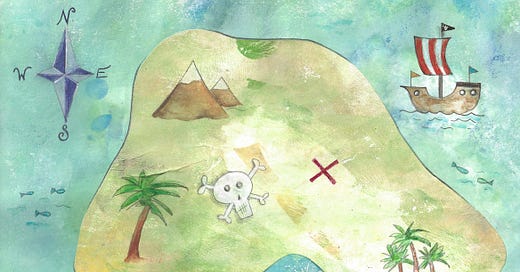


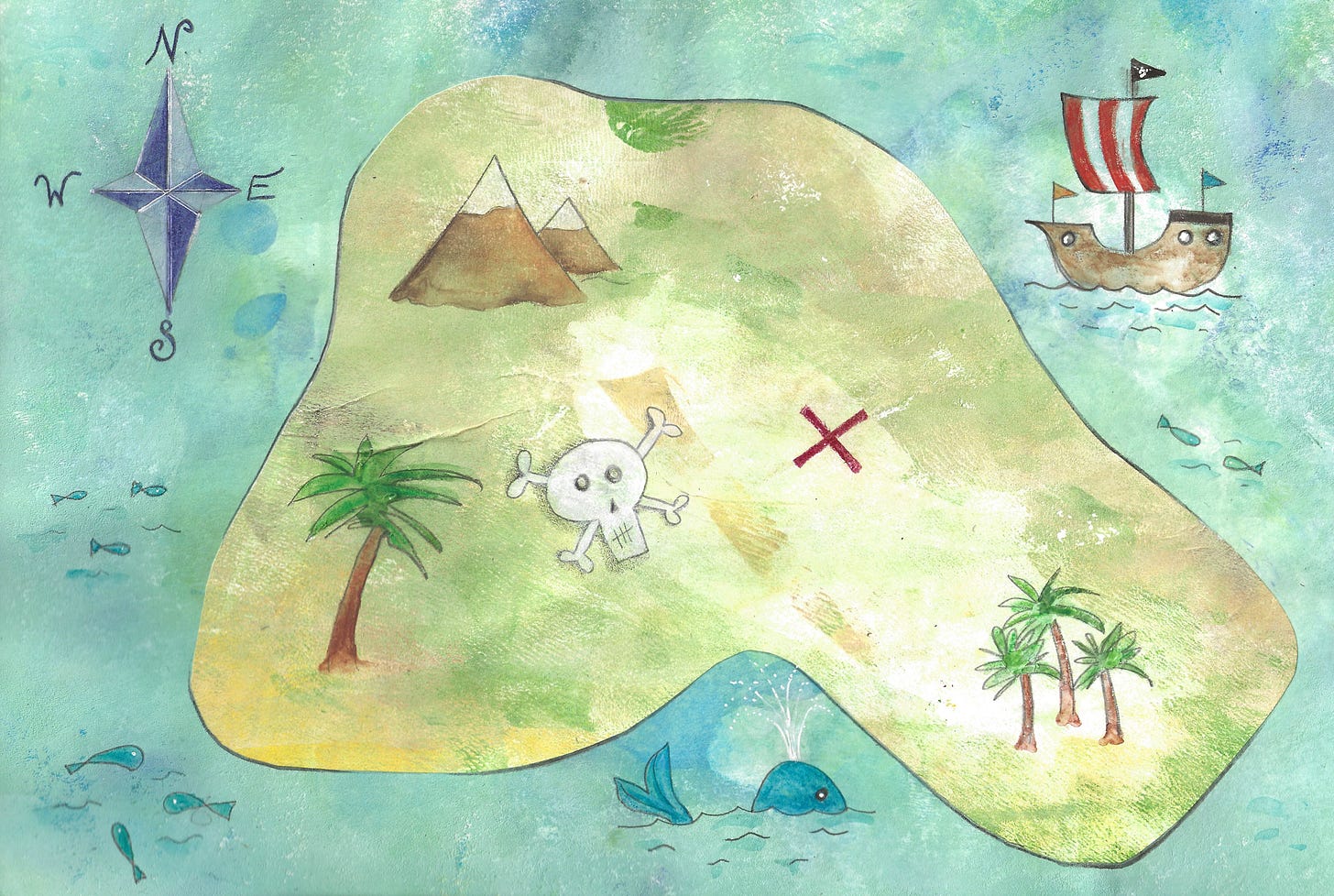
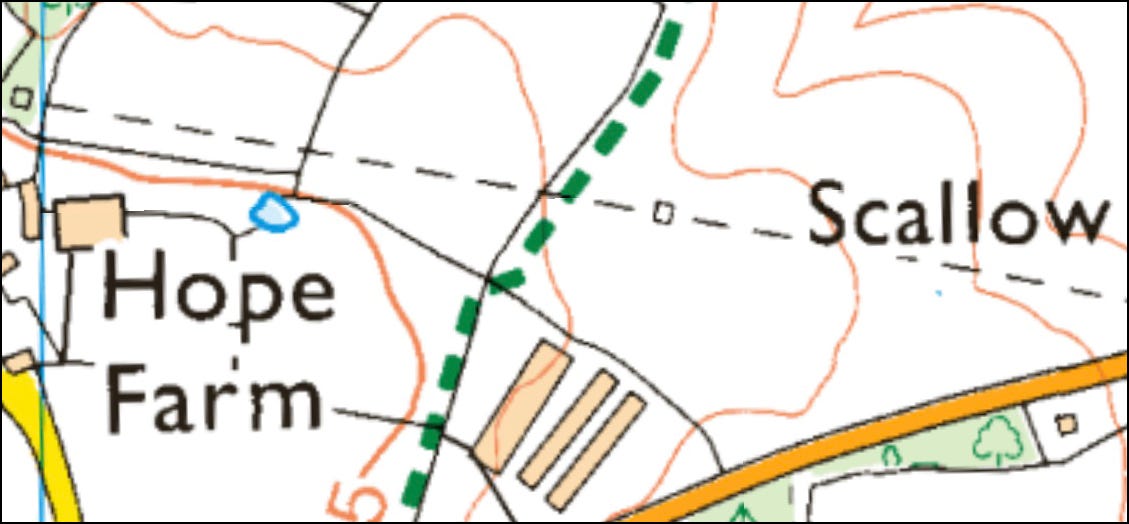
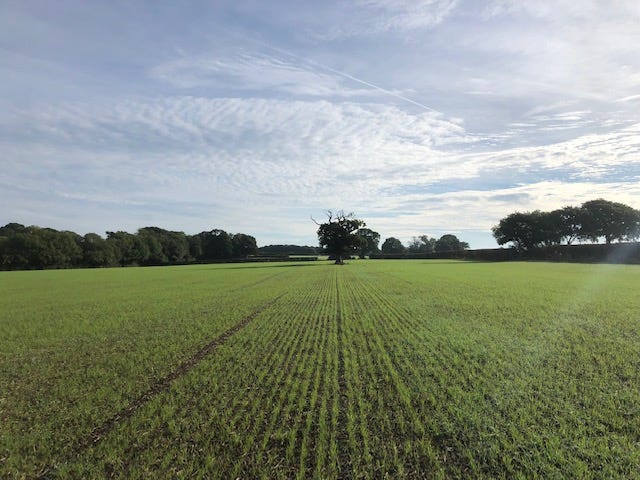
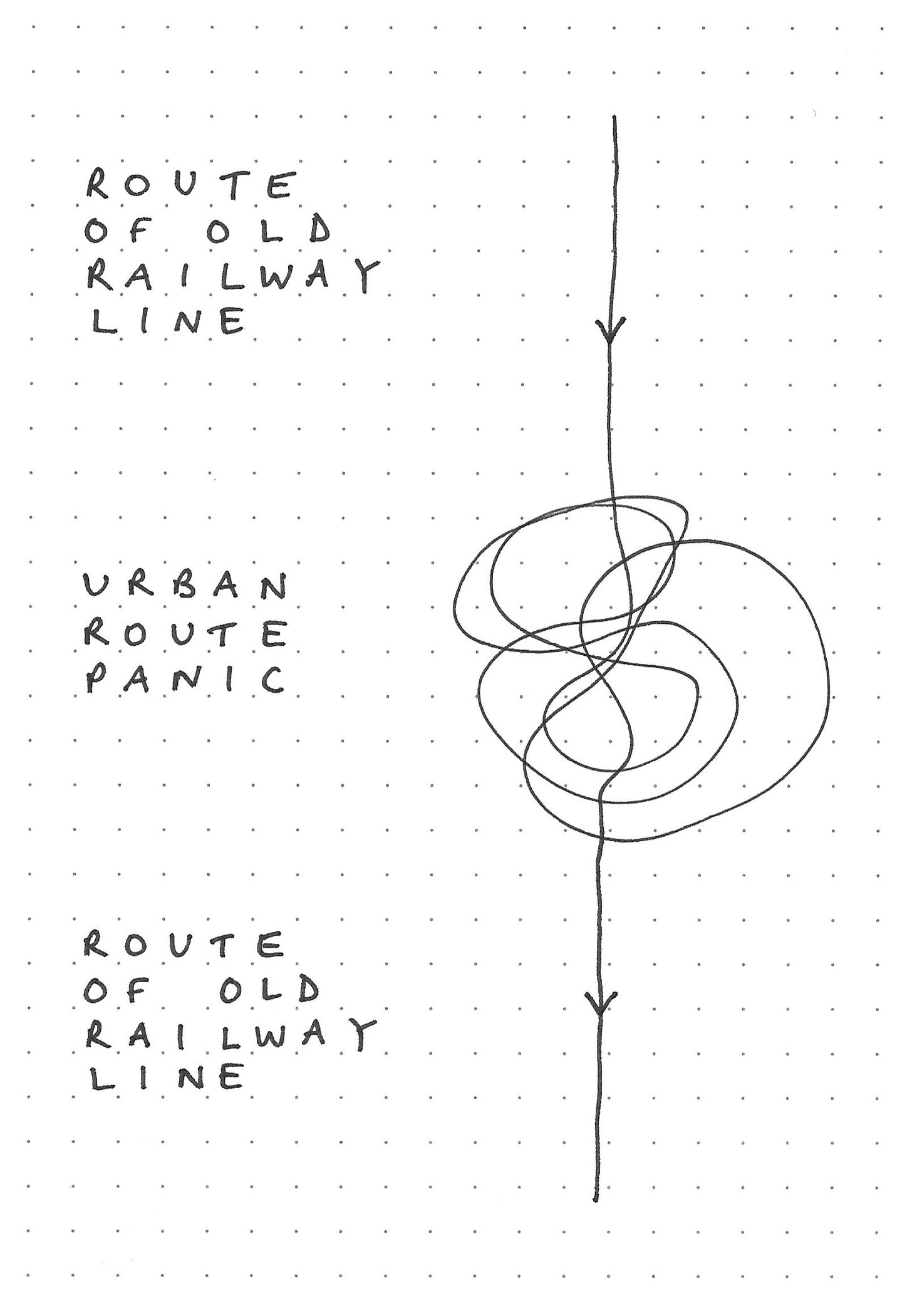
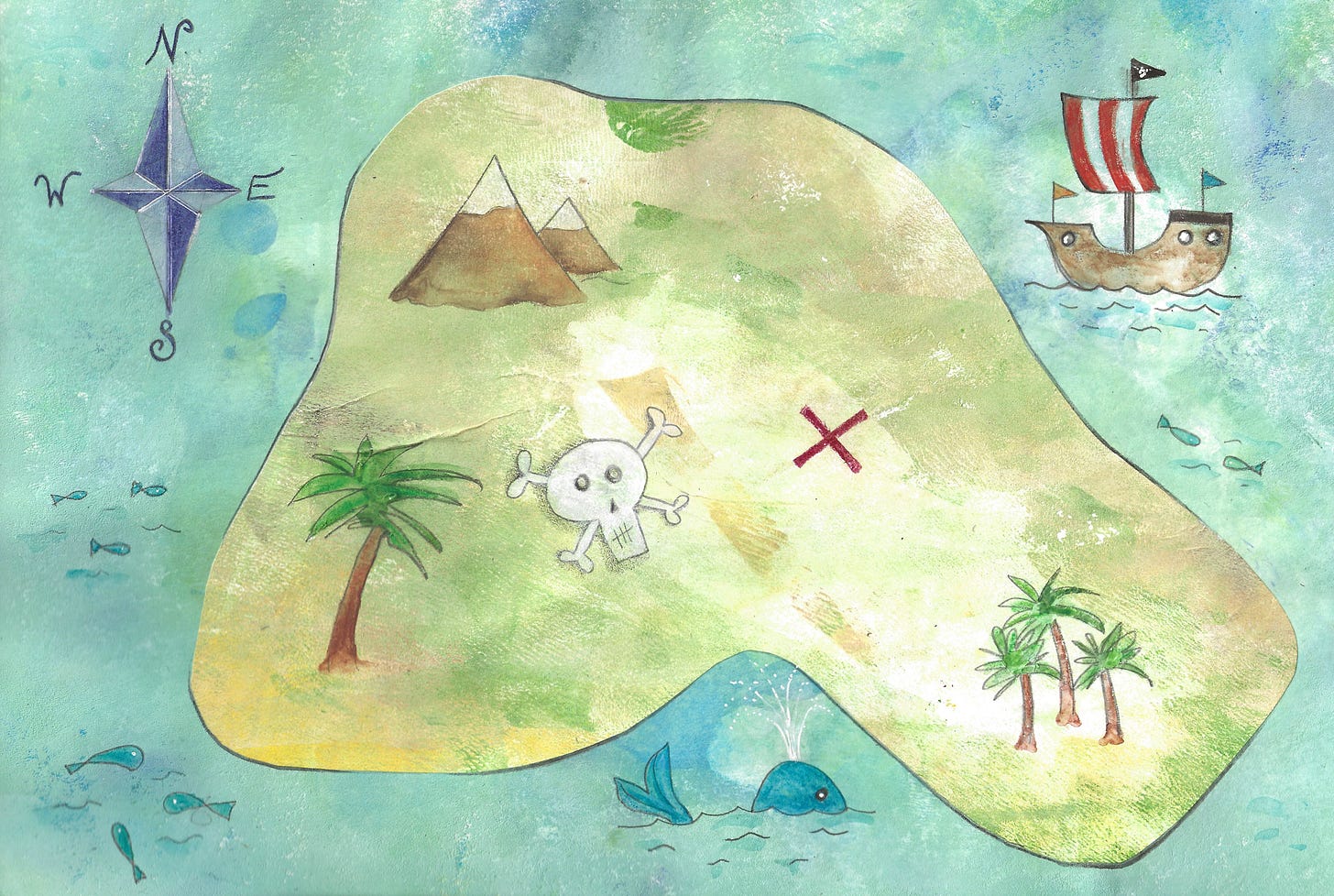
Heads up, treasure seekers!
There are CLUES.....!
Ready?
1. Read the instructions for the puzzle.
2. Read the title of the puzzle.
3. Have a good look at the first word of the first sentence.
4. See what marks the spot – and where – in the tenth sentence.
BONUS CLUE: Maybe try extrapolating clue 3 across the rest of the story. Second word of second sentence, third word of third sentence… etc!
Okay, I'll pipe down now. Over to YOU, treasure seekers!
Deadline for you to e-mail the solution is now noon (UK time) on Friday 16th June!
I still haven’t got it - but the deadline extension has inspired me to not get it again. 😀